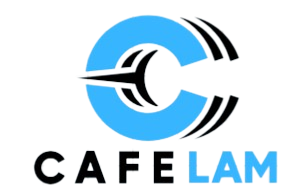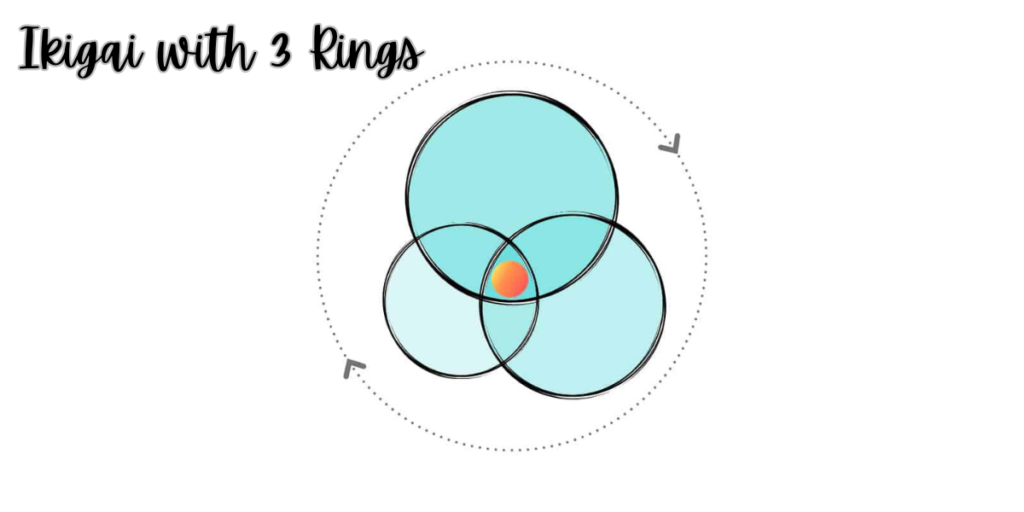The Japanese concept of Ikigai—meaning “a reason for being”—has gained global recognition as a framework for discovering one’s purpose in life. Traditionally represented by a four-circle Venn diagram, Ikigai with 3 Rings encompasses:
- What you love
- What you’re good at
- What the world needs
- What you can be paid for
However, a more streamlined version, known as the “Ikigai with 3 Rings” model, focuses on three core elements:
- Passion: What you love
- Profession: What you’re good at
- Mission: What the world needs
This simplified model offers a practical approach to aligning your life with purpose and fulfillment.
Understanding the Three Elements
Passion (What You Love)
Identifying your passions involves reflecting on activities that bring you joy and fulfillment. Consider hobbies, interests, or tasks that you find engaging and energizing. This self-awareness is crucial for personal satisfaction and motivation.
Profession (What You’re Good At)
Assessing your skills and strengths helps determine areas where you excel. This includes both hard skills (technical abilities) and soft skills (communication, empathy). Recognizing your competencies enables you to leverage them effectively in your personal and professional life.
Mission (What the World Needs)
Understanding the needs of the world involves identifying issues or causes that resonate with you. This could range from environmental conservation to social justice. Aligning your efforts with these needs contributes to a sense of purpose and societal impact.
Visualizing the Ikigai with 3 Rings Model
Imagine a Venn diagram with three overlapping circles, each representing one of the elements: Passion, Profession, and Mission. The intersection where all three circles overlap is your Ikigai—the sweet spot where your love, skills, and societal contribution converge.
Steps to Discovering Your Ikigai
Self-Reflection
Begin by introspecting to identify your passions, skills, and the causes you care about. Journaling or meditation can facilitate this process, allowing for deeper self-understanding.
Seek Feedback
Engage with friends, family, or colleagues to gain insights into your strengths and areas where you make a positive impact. External perspectives can provide valuable clarity.
Experiment and Adapt
Try engaging in activities that lie at the intersection of your identified circles. Volunteer for causes you’re passionate about, pursue projects that utilize your skills, or explore new professional avenues. Be open to adapting your approach based on experiences and feedback.
Comparison Chart: Ikigai with 3 Rings vs. Traditional 4-Circle Model
| Aspect | Ikigai with 3 Rings | Traditional 4-Circle Model |
| Elements Included | Passion, Profession, Mission | Passion, Profession, Mission, Vocation |
| Focus | Simplified approach for practical application | Comprehensive framework encompassing financial aspects |
| Complexity | Easier to understand and implement | More detailed, requiring deeper introspection |
| Financial Consideration | Implicit within Profession and Mission | Explicitly addressed through the ‘What you can be paid for’ circle |
| Adaptability | Flexible, suitable for personal development | Structured, ideal for career planning and life coaching |
Benefits of the 3-Ring Ikigai Model
- Simplicity: The reduced number of elements makes it easier to grasp and apply, especially for individuals new to the concept of Ikigai.
- Focus on Fulfillment: By concentrating on passion, profession, and mission, this model emphasizes personal satisfaction and societal contribution, which are key drivers of a meaningful life.
- Flexibility: The 3-ring model allows for adaptability, accommodating changes in personal interests, skills, and societal needs over time.
Critiques and Considerations
While the 3-ring model offers a streamlined approach, some critics argue that it overlooks the financial aspect addressed in the traditional 4-circle model. The omission of ‘What you can be paid for’ may lead individuals to pursue paths that, while fulfilling, might not be financially sustainable. Therefore, it’s important to consider financial viability when applying the 3-ring model to real-life decisions.
Conclusion
The “Ikigai with 3 Rings” model serves as a practical tool for individuals seeking to align their passions, skills, and societal contributions. By focusing on what you love, what you’re good at, and what the world needs, this approach simplifies the journey toward discovering your purpose. However, it’s essential to remain mindful of financial considerations to ensure a balanced and sustainable pursuit of one’s Ikigai.







